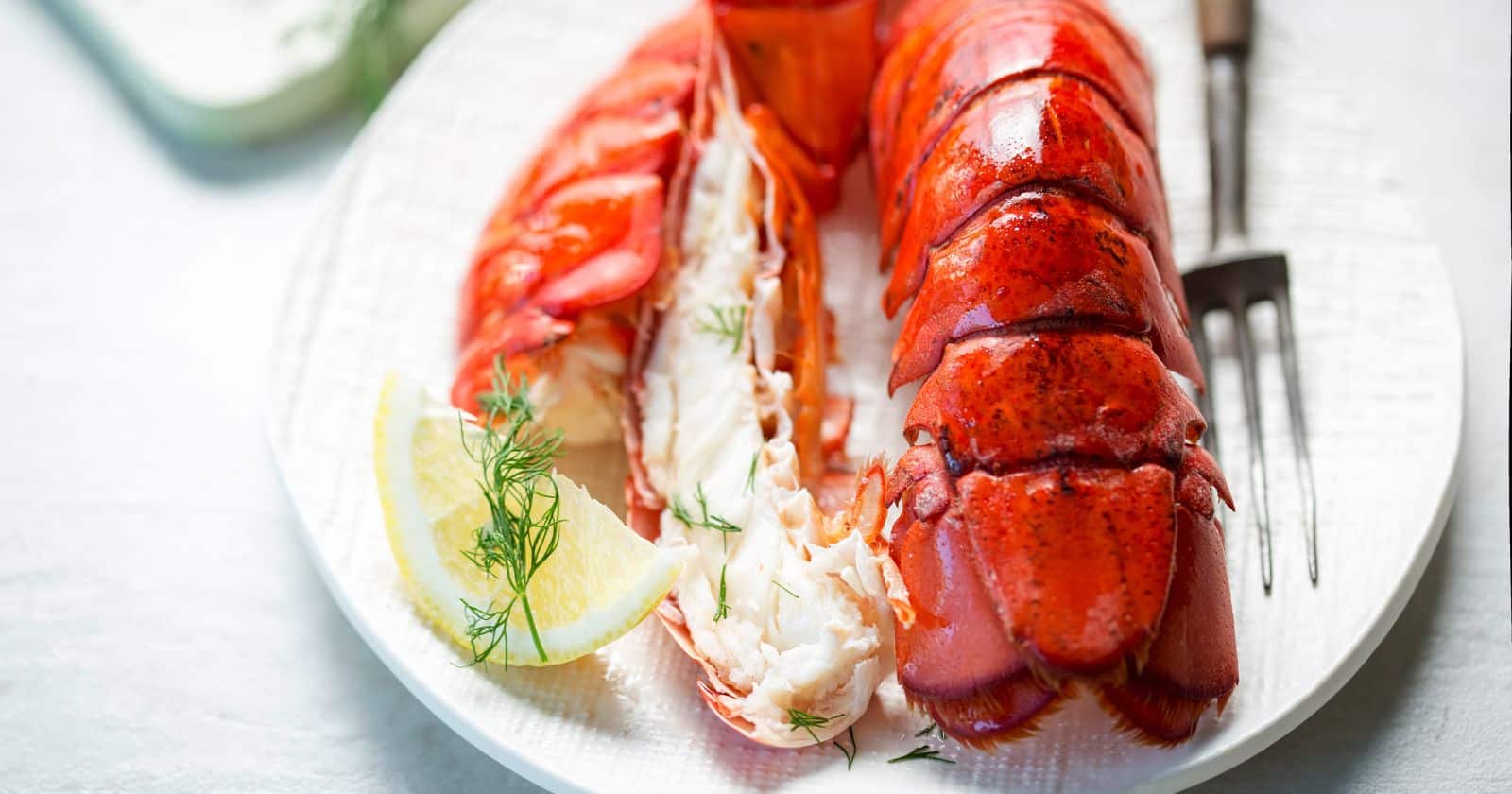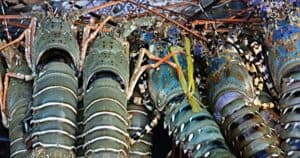Steamed lobster is a delicious seafood treat that is best enjoyed piping hot. However, keeping lobster hot after cooking can be challenging. The delicate meat can quickly become dried out or rubbery if not kept at the proper temperature.
In this comprehensive guide, you’ll learn professional tips and techniques to keep your steamed lobster hot and tender until ready to serve. With a few simple preparation steps and the right equipment, you can enjoy perfect lobster any night of the week.
Choosing the Freshest Lobsters
The key to tender, sweet-tasting lobster starts with selecting the freshest catch. Here are a few buying tips:
- Look for liveliness – Only purchase active, lively lobsters that show signs of movement. Avoid any that seem weak or lethargic.
- Check the shell – Opt for lobsters with a shiny shell without any nicks or cracks. Soft shells indicate a recent molt which yields more tender meat.
- Know the weight – Estimate 1⁄4 to 1⁄2 pound per person. Larger lobsters tend to be tougher. The ideal size is 1 to 11⁄4 pounds.
- Consider female lobsters – Many chefs recommend females as they tend to be fuller and meatier in the tail and claws.
- Trust your senses – Raw lobster should smell pleasantly briny. Discard any with an ammonia-like odor.
Choosing lively, healthy lobsters will give you the best results when it comes to keeping them piping hot off the steamer.
Preparing Your Lobsters Before Cooking
Proper preparation is key to cooking lobster that stays hot and tender:
- Rinse thoroughly – Run cold water over lobsters to rinse sand and debris from the shell.
- Remove rubber bands – Discard any restrictive rubber bands from the claws to allow even cooking.
- Consider dispatching – Separate the tail from the body before cooking for safety and even cooking.
- Split larger tails – Cut larger lobster tails in half lengthwise so steam can penetrate evenly.
Taking these steps allows steam to circulate properly and cook the lobster meat evenly throughout. This prevents over or undercooking that can lead to toughness.
Choosing the Best Cooking Method
Steaming is the ideal method for keeping lobster hot off the stove. Here’s why it’s superior to boiling or grilling:
- Preserves moisture – The moist heat of steam gently cooks lobster without stripping moisture like boiling.
- Prevents overcooking – Steam cooks food more slowly than boiling water, preventing toughening.
- Enhances flavor – Steaming infuses delicate seafood flavors into the lobster meat.
- Easy temperature control – Steam temperature never exceeds 212°F, eliminating overcooking.
- Allow seasoning – Intense boiling water can dilute flavors, while steam allows seasoning to penetrate.
Steaming truly is the best cooking method for maintaining tender textures and succulent flavors.
Steaming Times and Temperatures
Cooking your lobster properly is vital for keeping it hot and delicious. Follow these guidelines:
- Bring water in a large pot fitted with a steamer basket or insert to a rolling boil.
- Add lobsters to the steamer, cover, and start timing.
- 1 pound lobsters – steam for 8 minutes
- 11⁄4 pound lobsters – steam for 9 minutes
- 11⁄2 pound lobsters – steam for 11 minutes
- Use an instant-read thermometer to check the internal temperature in the thickest part of the meat. It should reach 135°F.
- Immediately remove lobsters from the steamer once cooked.
Following the proper steaming times and temperatures ensures your lobster is cooked through without becoming tough.
Checking Doneness
Look for these signs your lobster is cooked perfectly:
- The shell turns bright red all over
- The meat is opaque and white
- The internal temperature reaches 135°F
Undercooked lobster will be translucent while overcooked meat appears chalky.
Keeping Steamed Lobster Hot
Once your lobster is cooked to tender perfection, use these professional chef tips to keep it mouthwateringly hot:
Transfer Immediately to a Warm Dish
- Remove lobsters from the steamer using tongs and transfer directly to an oven-safe dish.
- Keep the serving dish warm by placing it in an oven preheated to 200°F while cooking the lobster.
Transferring to pre-warmed dishes prevents the lobsters from cooling quickly after steaming.
Cover Tightly With Aluminum Foil
- Wrap the lobsters very tightly in two layers of heavy-duty foil right after plating.
- Leave space between the foil and lobster shell rather than pressing it directly against the meat.
- Tightly crimp together the foil edges to seal in steam and warmth.
The foil tent reflects heat back into the lobsters while preventing cooling from air exposure.
Set in a Warm Oven
- Place the foil-wrapped lobster plate into a warmed oven set between 175°F and 200°F.
- Avoid higher temperatures that can overcook the delicate meat.
The gentle oven heat continues slowly cooking the lobster just below simmering temperatures. This keeps it piping hot for 20-30 minutes.
Add Warm Butter Under the Foil
- Place a few tablespoons of melted butter under the foil tent before crimping it tightly.
- The butter bastes the lobster meat, keeping it extra moist and hot.
The butter also enhances flavor while preventing the lobster from drying out in the residual oven heat.
Use a Heat Lamp
Commercial kitchens use heat lamps over food platters to maintain safe serving temperatures. While not practical for home use, heat lamps can keep lobster hot at restaurants or buffets.
Maintaining Safe Temperatures
It’s vital to keep lobster within safe temperature zones to prevent illness:
- Keep hot steamed lobster held at 140°F or above.
- Do not leave lobster between 40°F and 140°F for over 2 hours total, including prep and serving time.
- Discard any remaining lobster within 1 to 2 days. Do not reheat more than once.
Following food safety guidelines prevents harmful bacterial growth on seafood.
Reheating Leftover Lobster
For the best results reheating leftover steamed lobster:
- Remove lobster meat from the shell if reheating pre-picked meat.
- Place in a saucepan with 1-2 tablespoons broth or butter.
- Steam over medium heat for 2-3 minutes until heated through.
- Alternatively, reheat in a microwave on Medium power in 30 second increments.
Properly reheated leftover lobster can taste nearly as amazing as when freshly steamed.
Serving Hot Steamed Lobster
Once your lobster is fully cooked and steaming hot, it’s time for the fun part – eating! Follow these tips for the perfect lobster dinner:
Provide the Right Utensils
Arm your diners with lobster picks, small forks, crackers, and finger bowls. Show them how to dismantle the lobster properly to access all the sweet meat.
Offer Dipping Sauces
Serve homemade aioli, clarified butter, mustard sauce, or lemon wedges for dipping the succulent meat.
Pair with the Perfect Sides
Complete the meal with dishes like corn on the cob, roasted potatoes, or a fresh green salad.
Watch for Overcooking
Remove lobster from any heat source as soon as it is hot to prevent overcooking it further.
Enjoy Immediately
For absolute perfection, start cracking and feasting on your lobsters immediately after heating through.
Storing Leftover Lobster
Follow proper storage methods to enjoy leftover lobster another day:
- Pick all the meat from the shells after serving.
- Place lobster meat in an airtight container and refrigerate.
- Use leftover picked lobster meat within 1-2 days for maximum freshness and flavor.
- Frozen lobster meat will keep for 2-3 months in the freezer. Thaw in the refrigerator before reheating.
Taking care to properly store leftovers allows you to enjoy steamed lobster again later in the week without wasting any.
Conclusion
With this complete guide, you now have all the tools needed to keep steamed lobster hot and succulent from kitchen to table. Starting with the freshest lobsters, proper cooking techniques, and foolproof warming methods, you can now enjoy restaurant-quality results right at home. Impress your guests with tender lobster that arrives at the table piping hot – just as it should be.





